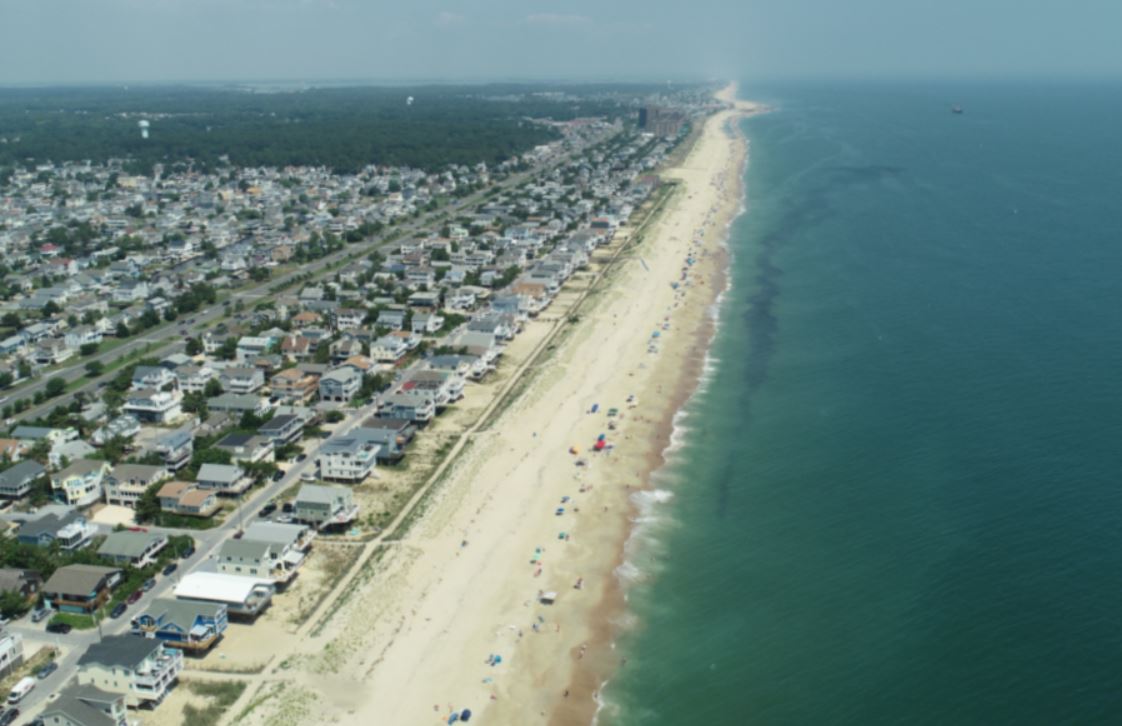Coastal development adds stress to beach systems, especially to dunes. Dunes and beaches are the first lines of protection from wave action for coastal communities during coastal storms. Dunes also act as storage areas that supply sand to the beach during storms.
Jennifer Luoma Pongratz
302-608-5502
If coastal development is not managed with respect for the dynamic nature of dunes, coastal storms may cause serious property damage and threaten lives. Increased erosion and vulnerability to coastal storms may also cause significant economic impacts to individuals, businesses, and state and local governments.
In 1972, the Delaware General Assembly passed the Beach Preservation Act (7 Del.C. Chapter 68) to enhance, preserve and protect public and private beaches and to ensure their use as protective and recreational lands.
The Act defines the beach as the area extending from the Mean High Water line of the Atlantic Ocean and Delaware Bay seaward 2,500 feet, and landward 1,000 feet and from the Delaware/Maryland line at Fenwick Island to the Old Marina Canal north of Pickering Beach.

To ensure that beaches and dunes are able to perform their protective and recreational functions, construction must not occur on them.
A “building line” has been established along the coast as part of the Regulations Governing Beach Protection and the Use of Beaches (7 DE Admin. Code 5102). The building line, which parallels the coastline, is designated on DNREC maps.
No construction may take place seaward of the building line without a Coastal Construction Permit or Coastal Construction Letter of Approval from the Department.
Section 6805 (d) of the Beach Preservation Act states:
The Department shall grant or deny a permit or letter of approval required by subsections (a) and (c) of this section in accordance with duly promulgated regulations. If any structure proposed to be built seaward of the building line could reasonably be reduced in size or otherwise altered in order to eliminate or diminish the amount of encroachment over the building line, the Department shall require such reduction or alteration as a condition of granting the permit or letter of approval.
A four-step process was created to formulate a way in which dwellings could be designed so that encroachment over the building line is minimized. This process is described in Section 3.1.1.2 of the Regulations Governing Beach Protection and the Use of Beaches (7 DE Admin. Code 5102).
The Regulations Governing Beach Protection and the Use of Beaches not only protect the beach and dunes as natural resources — they also protect structures from coastal storms through siting requirements.
Here are some other construction practices that can be utilized to better protect structures from storm damage:
Learn how to protect dunes by planting beach grass, using designated dune crossovers, and erecting sand fence.
FEMA’s Coastal Construction Manual: Principles and Practices of Planning, Siting, Designing, Constructing and Maintaining Residential Buildings in Coastal Areas
Damage-Resistant Practices for Designing Septic Systems in Coastal High Hazard Areas
Related Topics: beaches, coastal, construction, development, ocean and coasts, permitting and regulation, watershed, waterways